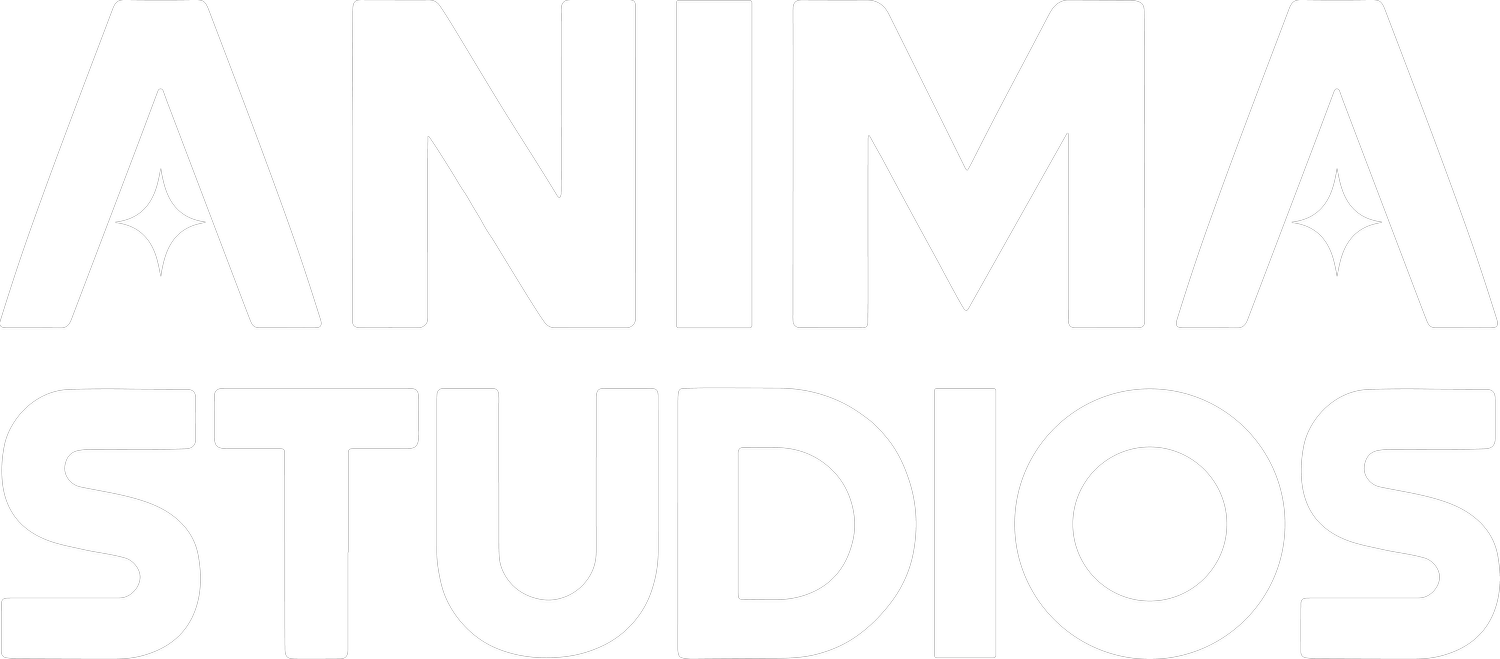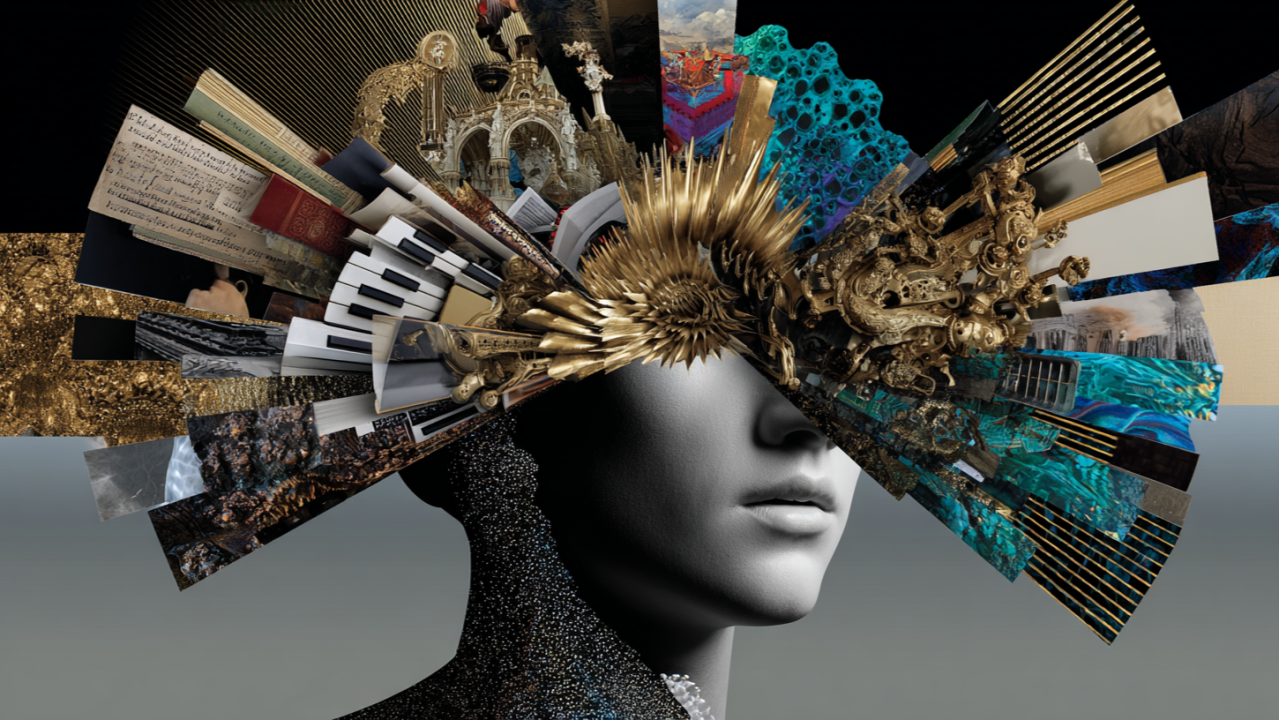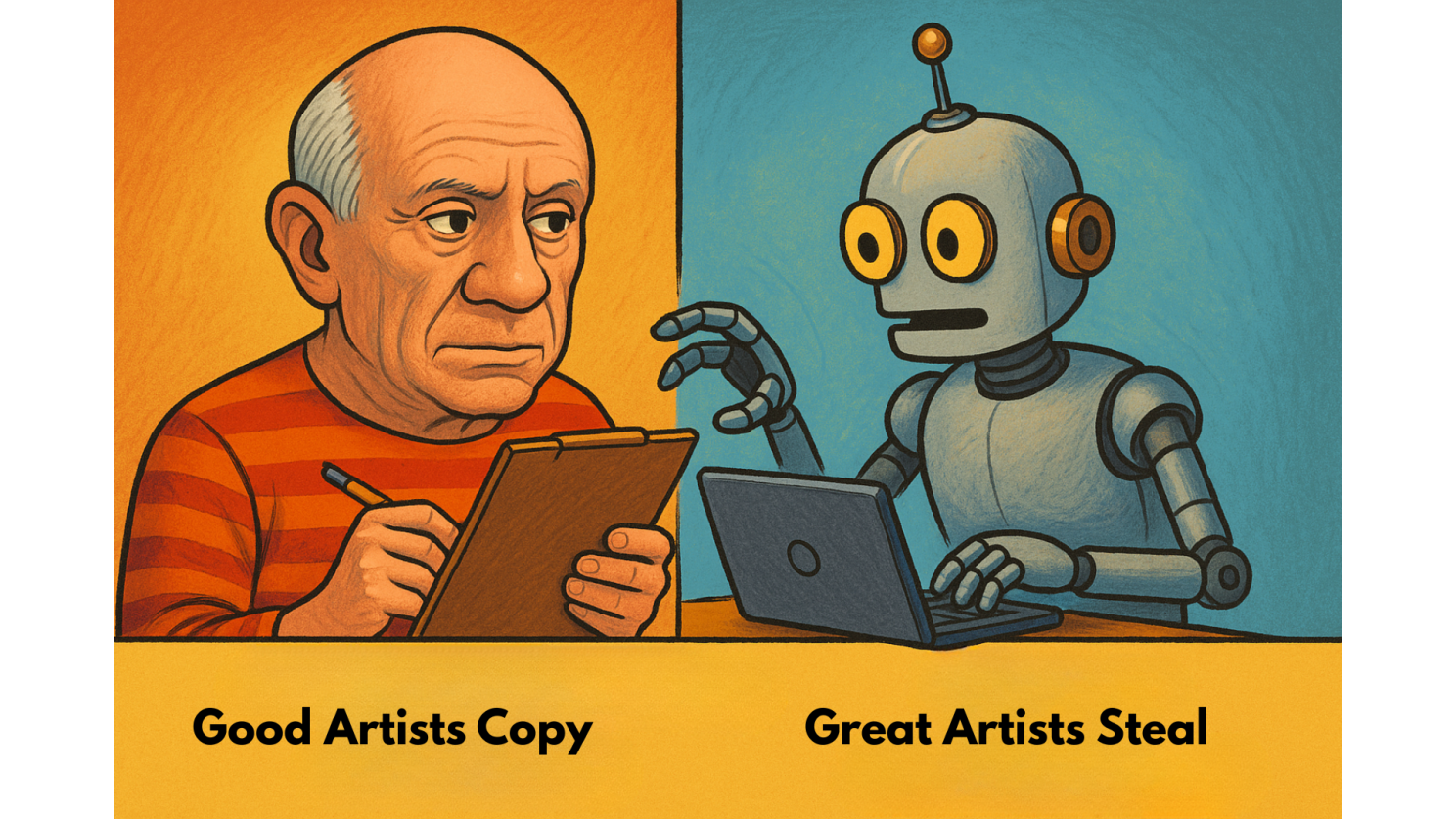AI vs Humans: The Double Creativity Standard
There's a ghost in the room for creative industries everywhere: Generative AI.
For a lot of us, the gut reaction is skepticism. We look at AI-generated work and think, "It's just a soulless copycat, a clever statistical trick." And hey, that reaction makes sense! We've all seen the weird, uncanny stuff that just feels... off.
But here’s the thing: that critique is based on a romantic, and frankly, untrue story we tell ourselves about our own creativity. When we dismiss AI, we're not just misunderstanding the tech; we're misunderstanding the very thing that has sparked human innovation for centuries. We're holding the machine to this impossible standard of creating something from nothing—creatio ex nihilo—that we've never even met ourselves.
This whole debate isn't really about tech specs; it's a philosophical one. And to lead our teams through this new world, we've got to get real about where our own ideas come from.
That outraged reaction to AI? It’s probably less about its process and more about its insane speed and scale. It takes us a lifetime to gather the knowledge to connect the dots while an AI can scan the world's library in the blink of an eye. That can feel intimidating, for sure.
But the process itself isn't alien. It’s a mirror, showing us how we mix and match ideas, just on a wild new level. The only way forward is to look right into that mirror and see the similarities.
The Mental Kaleidoscope: Busting the Myth of Originality
We all love the story of the lone genius, struck by a lightning bolt of inspiration. It's a great story, but it's a myth. The real story of human creativity has always been about synthesis.
Mark Twain nailed it with the metaphor of the “mental kaleidoscope.” He said:
““There is no such thing as a new idea. We simply take a lot of old ideas and put them into a sort of mental kaleidoscope. We give them a turn and they make new and curious combinations.””
That "mental kaleidoscope" is the engine of innovation! The magic isn't in the little bits of glass (the old ideas), but in the cool new pattern they make. Thinkers throughout history have been saying this for ages. Voltaire called originality a “judicious imitation” and Picasso’s famous line, “Good artists copy. Great Artists steal” isn’t about theft. It’s about absorbing an influence so deeply that it becomes part of your own unique toolkit, ready to be remixed.
Picasso's quote is not about theft. It’s about absorbing an influence so deeply that it becomes part of your own unique toolkit, ready to be remixed.
Even the psychologist C.G. Jung saw creatives as conduits, a “synthesis of contradictory aptitudes” Mary Shelley didn't invent her story from the void; she created Frankenstein by mixing Gothic horror with the cutting-edge science of her day. Creativity is all about building on what came before.
This points to a simple rule for both people and machines: the quality of what you create depends entirely on the quality of what you consume. It's “Garbage IN, Garbage OUT” A creative who only consumes junk will produce junk. The same goes for AI. A model trained on a crappy dataset will give you uninspired slop. But one trained on a high-quality, diverse dataset, guided by a creative with taste through prompting? That's where the magic can happen. So for leaders, the question isn't just "What can your AI do?" but "What did you train it on and who is using it?"
The Machines Method: Same Idea, Unbelievable Scale
If you strip away the jargon, how an AI "creates" is a lot like our own mental kaleidoscope—just on a scale that's hard to wrap your head around.
It starts with training, which is basically the AI's version of reading the world. An LLM learns from trillions of words, not by memorizing, but by figuring out the patterns and connections in how we communicate. It's a lifetime of learning, super-compressed.
Then it makes connections. AI uses "embeddings" to map out how ideas relate to each other. It's the tech version of our own intuition for seeing how different concepts link up.
Finally, it generates something new. Think of it as a kind of probabilistic intuition. The AI isn't pulling a file from a folder; it's making a series of highly educated guesses to create something that's statistically likely, yet totally original. For an image AI, it’s like a sculptor starting with a block of digital static and, guided by the prompt, chipping away until an image appears. Its neural network is the most powerful kaleidoscope ever built.
This is where "prompt engineering" comes in. It's not just typing; it's the new creative direction. We're the ones who provide the brief and the feedback, shaping the AI's raw talent into something brilliant and on-brand. Our role shifts from doing all the work to being expert-level directors.
The Law Is Catching Up (and What It Means for Us)
And guess what? The law is starting to get on board with this idea. In a big case against the AI company Anthropic, a judge ruled that training an AI on copyrighted books is "fair use."
Why? Because, as the judge put it, the AI's learning was "quintessentially transformative." It wasn't learning to copy the books, but to "create something different." He even made the direct comparison, saying that, "Like any reader aspiring to be a writer, Anthropic's (AI models) trained upon works" to build their skills.
This is huge! It gives a legal thumbs-up to the whole idea of AI-powered creation. But there's a catch: how you get the data matters. The judge said using pirated books was a no-go. So for leaders, this is simple: the green light is on for AI creation, but there's a big red stop sign on shady data.
The New Playbook: From Creator to Conductor
So, what does this all mean for us? It means it's time for a new leadership playbook. For too long, creative leaders have been attached to the myth of being the "creator of originals." The new, essential role is to be the "Orchestrator of Influences."
Think of yourself as a conductor. Your human team members are your star musicians—they bring the taste, the soul, and the cultural know-how. Generative AI is a powerful new instrument in your orchestra. Your job isn't to play every note. It's to write the score (the strategy), set the tempo (the creative direction), and lead the whole ensemble to create something amazing. The win isn't in generating every idea yourself, but in the genius of the final performance.
The real question we should be asking isn't, "Is AI creative?" That's a distraction. The real question is, "How are we going to conduct this incredible new orchestra to build our brand, wow our audience, and define what's next?"
It's time to move past the fear and the romantic myths and step into the role of the conductor. The future doesn't belong to the lone genius. It belongs to the one holding the baton.
About the series & the author
This article is part of an ongoing series exploring the monumental shift of generative AI across the creative industries—from business and philosophy to technology and storytelling. We’re challenging myths, unpacking value, and redefining what creativity means in this new era.
I’m Riccardo Fredro, founder of Anima Studios—where we fuse cutting‑edge AI with over a decade of storytelling, filmmaking, marketing, and sound design to craft visually stunning, emotionally resonant content . Through this series, I’ll share insights and actionable perspectives on how generative AI is transforming leadership, culture, and the creative economy.
Stay tuned for more — and let’s reimagine creativity together.


